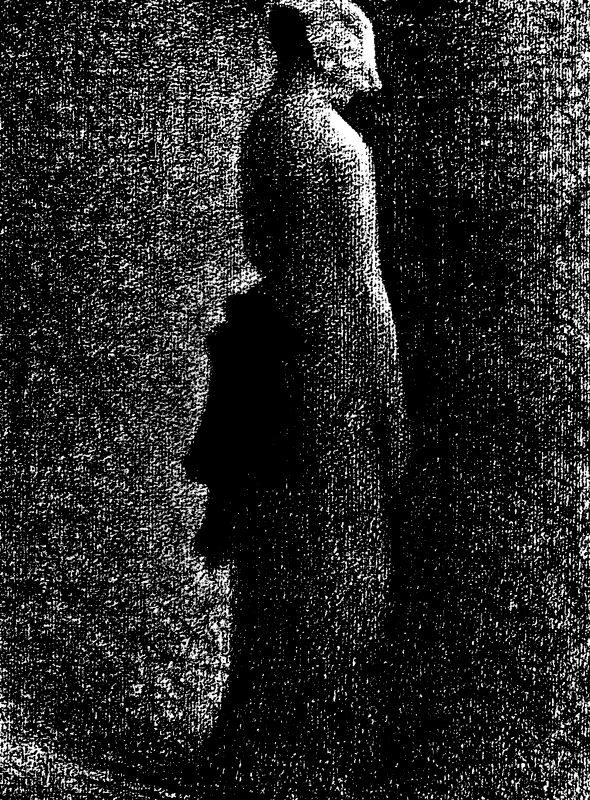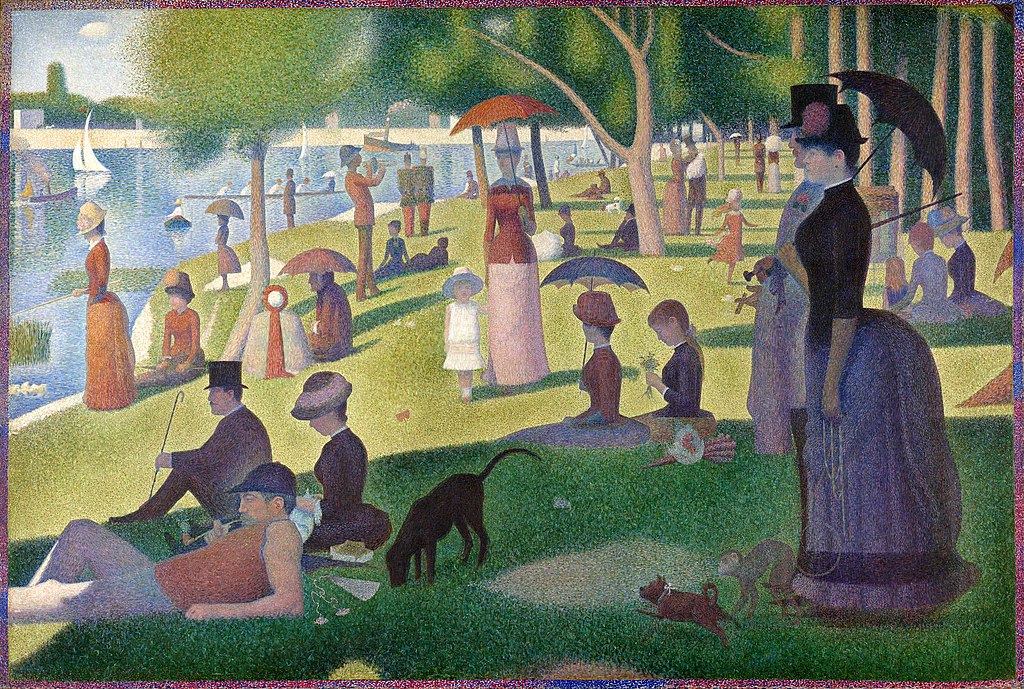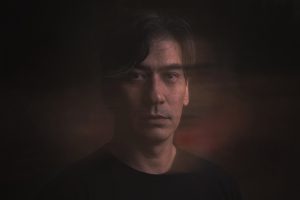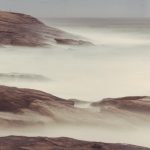Georges-Pierre Seurat (1859-1891) was a French painter, he lived for just 32 years. He was born and died in Paris, but in that short life he collaborated with a large stream of art in Post-Impressionism, as we will see. He studied drawing at a municipal school, then went to the School of Fine Arts and at the Louvre museum he studied great masters such as Ingres, Delacroix, among others.
Interested in science, he immersed himself in studies by important theorists regarding scientific data on colors. In his experiments between 1882 and 1883, he dedicated himself to drawing with the desire to create something
different from the traditional design.
pointillism
In this exercise, you avoid creating lines and start drawing with shapes. That is, concentrating black masses of paint and leaving white parts of the canvas, thus creating drawings with light and shadow effects. See this in the image to the side. Happy with this, he decided to abandon the line for good and went on to create his works, especially his painting, using this technique that was new to Paris at the time.

Georges-Pierre Seurat, with the knowledge he acquired, will create a painting by appropriating scientific techniques, following the law of contrast, degradation and irradiation. And so, in a very special way, it makes an optical mixture with tiny dots of color, next to each other. This approach of small colored dots makes our brain add one color to another, complementing the chromatic value of the painting. Seurat calls his technique divisionism, popularly known as pointillism. See the artist's way of painting in the image below.

Seurat's division or pointillism is the novelty that excited his friend and artist Paul Signac. Thus, the two continued with this way of painting whose research base was scientific studies.
More works by Seurat in the video:
Anyway, we'll meet in the next article on modern art.
So, did you like the article and want to contribute a coffee of thanks? Make your contribution through the QR Code below. Help the Foto Blog that helps you. Any value is welcome! A coffee is R$2 here, for example.

Related articles
| Make long exposure | Types of cameras | Light the principle (part 1) | Light the principle (part 2) |
Other links
| Impressionism | Saquarema | Photo | Photography | Online Gallery | FotoBlog | Claude Monet | Photographic Technique | Color Photographic Technique | Quality of a photo | What is Photography? | The Role of the Sensor | Pricing | DSLR | Compact | Lens Types | Photographic Technique 5 |





